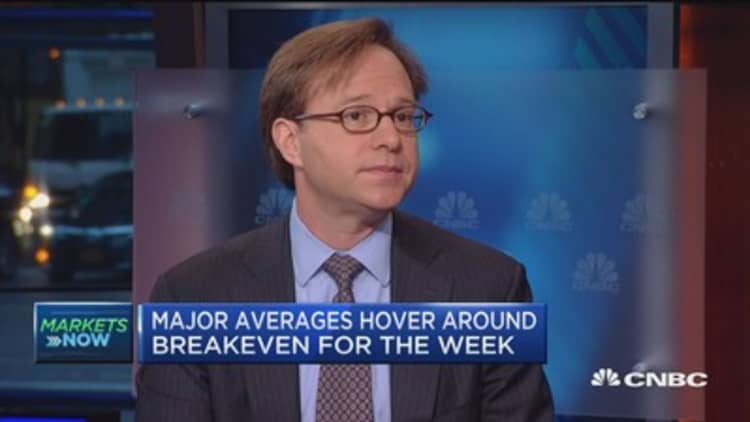
Global bond yields are rising at a rapid clip as traders try to adjust to the idea of a world that isn't flush with easy money from central banks anymore.
The move in bonds has been abrupt, taking the U.S. 10-year yield to a five-month high of 1.87 percent by midmorning Thursday, from 1.79 percent the day earlier. The German 10-year bund was yielding 0.17, after being at zero just a few days ago, and the U.K. 10-year gilt was at a pre-Brexit high. Yields were also rising Thursday in Japan, Canada and Brazil, among others.
The immediate catalyst was a better-than-expected preliminary report showing a 0.5 percent increase in the United Kingdom's GDP. But more broadly, that data added to the view that global central bankers may not continue to ease rates and add stimulus at the pace they had been doing, just as the U.S. Fed looks set to raise interest rates.
"This is the rumblings of a bond tantrum. It's not a tantrum yet, but it is the rumblings of one. You could quickly get (10-year yields) to 2.02," said Andrew Brenner, global head of emerging markets, fixed income at National Alliance.
Brenner said the move is the result of many investors being positioned poorly, and he said the correction could stop once the uncertainty surrounding the U.S. election is over. "I think money will come back into the marketplace after the election," he said.
It depends on a number of things. One is the data, and two is the the U.S. election.Boris RjavinskiWells Fargo director of rate strategy, on what the US 10-year does next
The move comes as central bankers around the world suggest that long-end rates could go higher. Bank of Japan Governor Haruhiko Kuroda said Thursday the BOJ would not try to push down long-duration long government bond yields, even if they rise further. That's because the central bank has focused on controlling the yield curve for out to 10 years.
Ian Lyngen, head of U.S. rate strategy at BMO, said the move in U.S. 10-year yields has been technically based. He said the yield broke through important levels, and could reach 2 percent by year-end if not sooner.
"To break out above 2 percent, we need to do some significant consolidation and build a good volume base between here and 1.89. That was the top of the range that was in place in late spring this year," said Lyngen.
Boris Rjavinski, director of rate strategy at Wells Fargo, said there are too many unknowns to determine whether the 10-year will stay at 1.85 or higher, or move back down to 1.75 percent.
"The whole idea is that central banks may not necessarily rush to add a lot more stimulus in the near term is what's driving yields higher and yield curves steeper," Rjavinksi said. "It depends on a number of things. One is the data, and two is the the U.S. election."
He said if there is a sweep in Congress, with one party dominating, that would surprise the markets. "Then chances are we get a decent sized fiscal stimulus package, because one party would control the checkbook," he said, adding that such an event would send yields higher.
The market will also focus on the Federal Reserve after the election, and it is widely expected to raise rates in December, perhaps signalling that it will do so after next week's meeting.


